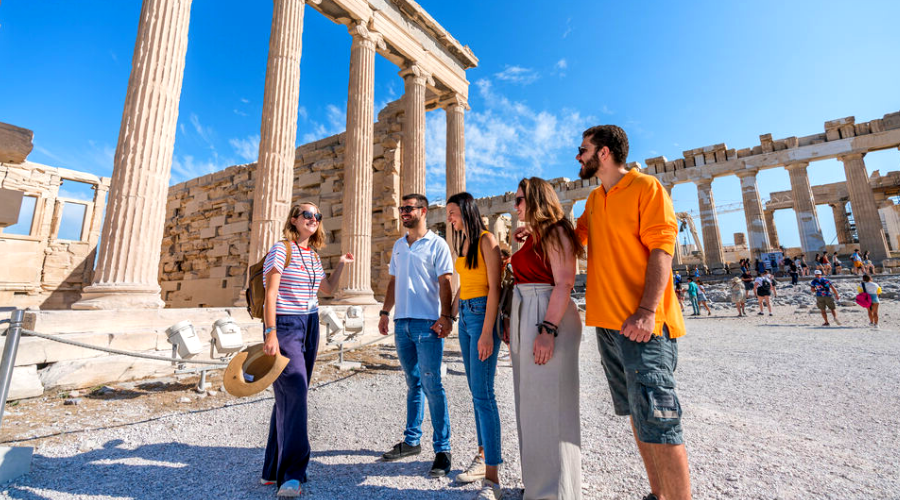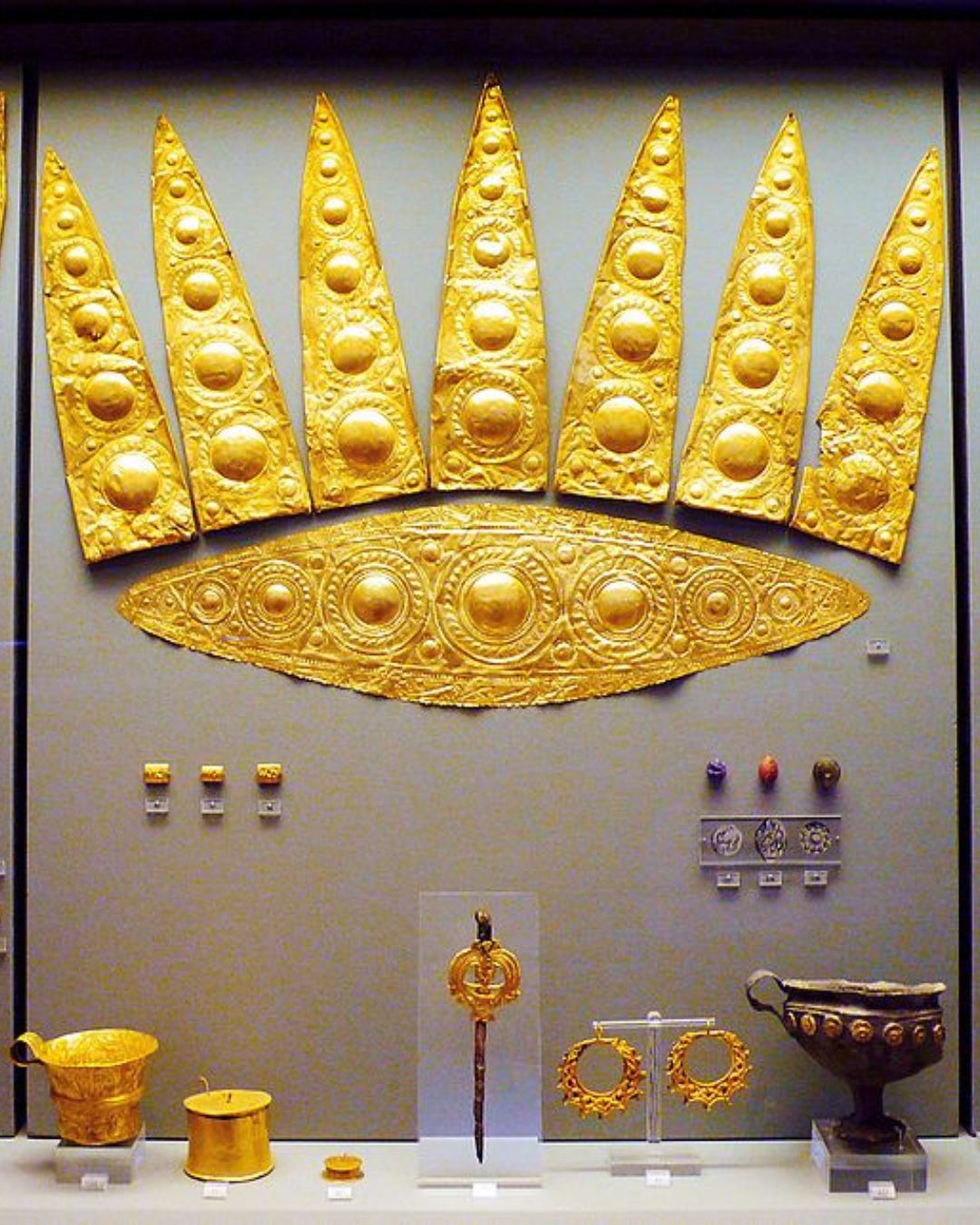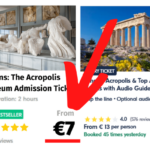What to See at the National Archaeological Museum: A Guide
Ancient Exhibits at National Archaeological Museum.
Introduction to the National Archaeological Museum of Athens
Preparing for Your Visit in National Archaeological Museum in Athens
Planning a visit to the National Archaeological Museum of Athens (NAMA)? You’re in for a treat! This iconic museum, established in 1889, ranks among the world’s premier archaeological museums.
With a treasure trove of artifacts and sculptures from the ancient Greek world, it’s a must-see. Before diving into the museum’s rich history, let’s ensure you have all the information needed for a memorable visit.
Firstly, know that NAMA houses over 50 rooms spread across multiple floors. Therefore, wearing comfortable shoes is a must.
Additionally, consider the museum’s size when planning your visit duration. A quick tour might not do justice to its vast collection.
Moreover, photography enthusiasts should check the museum’s photography policy. Capturing these historical marvels can be a highlight of your visit. However, flash photography might be restricted in certain areas.
Booking Your Tickets and Tours
To enhance your experience, consider booking a guided tour. Sites like GetYourGuide.com and Viator.com offer insightful tours led by knowledgeable guides.
These tours not only enrich your understanding but also help in navigating the extensive museum effortlessly. Furthermore, booking tickets in advance through platforms like Tiqets.com can save you time, skipping the long entry lines.
 Acropolis and 6 Archaeological Sites Combo Ticket
Acropolis and 6 Archaeological Sites Combo Ticket
- Skip-the-line
- Free cancellation.
Now, let’s embark on a journey through time, exploring some of the museum’s most fascinating exhibits.
The National Archaeological Museum Must-See Exhibits
The Sculpture from Epidaurus (Exhibit 21)
Our journey begins with the Sculpture from Epidaurus, a remarkable artifact dating back to the 4th century BC.
This sculpture, originally part of a building above a mysterious underground labyrinth, has connections to the god of healing, Asclepius. Similarly, the nearby remnants of the sack of Troy offer a glimpse into ancient Greek history and mythology.
The Chariot of Diocletian (Exhibit 20)
Next, we encounter the Chariot of Diocletian. Discovered in modern-day Turkey, this artifact showcases the grandeur of the Roman Empire.
The bronze statues of panthers and deer, along with the central representation of Hercules’ labors, are awe-inspiring. For history buffs, this exhibit is a testament to the Roman Empire’s reach and cultural influence.
Statue of a Fighting Gaul (Exhibit 19)
Moving on, the Statue of a Fighting Gaul captures a moment in history. Dating from around 100 BC, this statue symbolizes the Roman conquest of Gaul.
The depiction of a wounded Gaul defending himself is not only an artistic marvel but also a reflection of the era’s tumultuous times.
The Golden Treasure of Carpenisi (Exhibit 18)
Furthermore, the Golden Treasure of Carpenisi, from central Greece, showcases exquisite craftsmanship. The gold belt, snake-shaped bracelets, and hair nets adorned with goddesses exemplify ancient Greek artistry.
Varvakeion Athena (Exhibit 17)
Moreover, the Varvakeion Athena gives us a glimpse of what once stood inside the Parthenon. This replica of the lost gold and ivory statue of Athena is a bridge to ancient Athens spiritual and cultural heart.
The Diplomat Amphora (Exhibit 16) in National Archaeological Museum
Additionally, the Diplomat Amphora is a significant piece. Crafted by the Dipylon Master, this funerary monument from 750 BC depicts mourners in a poignant scene, offering insights into ancient Greek funerary practices.
The Cycladic Harp Player (Exhibit 15)
Lastly for this section, the Cycladic Harp Player from Karos, around 4,500 years old, represents one of the earliest known musicians. This small yet significant statue connects us to the ancient world’s musical traditions.
In the next section, we’ll continue exploring more exceptional exhibits, each telling its unique story.
Remember, booking a guided tour through our partner sites can greatly enhance your understanding of these ancient wonders. Stay tuned for more intriguing discoveries from the National Archaeological Museum of Athens.
Delving Deeper into Ancient Wonders in National Archaeological Museum of Athens
Unveiling the Eleusinian Mysteries (Exhibit 14)
Continuing our exploration, we encounter the Ninion Tablet. Found at Eleusis and dating back to around 370 BC, it’s the sole known representation of the Eleusinian Mysteries’ initiation rites.
These mysteries were among the most sacred practices in ancient Greece, shrouded in secrecy. This exhibit offers a rare glimpse into these enigmatic rituals.
The Evolution of Greek Sculpture (Exhibit 13)
Furthermore, the Kouros and Khoury collection reveals the evolution of Greek sculpture.
The 10-foot-tall Kouros from the Temple of Poseidon at Cape Sounion, dating from 600 BC, showcases the transition from idealized to life-like representations in Greek art. Likewise, the Anavysos Koros blurs the line between earlier stiff forms and later dynamic statues.
The Diadem Bearer (Exhibit 12)
Similarly, the Diadem Bearer, a marble copy of a once-famous bronze statue, depicts a man in the act of tying a diadem.
This sculpture, signifying athletic victory, provides insights into the ancient Greek tradition of honoring athletes.
Aphrodite, Pan, and Eros (Exhibit 11)
Moreover, the Statue of Aphrodite and Pan, a playful and intricate sculpture, marks a shift in the portrayal of Greek deities. Created around 100 BC, it showcases a lively interaction between Aphrodite, Pan, and Eros (Cupid).
This exhibit reflects the lighter, more humorous aspects of Greek mythology.
The Epinetron of Aphrodite (Exhibit 10)
Additionally, the Epinetron of Aphrodite, used in thread making, is adorned with scenes of Greek mythology weddings.
Painted by the renowned Eritrea Painter, this artifact is thought to have been a wedding gift, linking us to ancient Greek domestic life.
Kiramikos Funerary Monuments (Exhibit 9)
The Funerary Monuments from Kiramikos, especially the Grave Stele of Hegeso, dating from 410-400 BC, depict subtle yet powerful scenes of mourning and remembrance.
These monuments offer a window into the personal and emotional aspects of ancient Greek life.
The Bronze Head of a Boxer (Exhibit 8)
Furthermore, the Bronze Head of a Boxer, discovered at Olympia around 330 BC, is a favorite for many.
This lifelike depiction of a victorious boxer, complete with a swollen eye and olive wreath, illustrates the importance of athletic competition in ancient Greek society.
Infinite Stories in National Archaeological Museum
Each artifact in NAMA tells a story, revealing facets of ancient Greek life, culture, and beliefs. As we progress through the museum, the connection between the past and present becomes more apparent.
These exhibits not only showcase artistic brilliance but also provide insights into the societal values of ancient Greece.
Remember, booking a guided tour through our partner sites, like GetYourGuide.com or Viator.com, can enhance your experience, offering expert insights into these historical treasures.
In the next section, we will delve into more breathtaking exhibits, each with its own unique tale to tell. Stay tuned as we continue our journey through the National Archaeological Museum of Athens.
Exploring Maritime Discoveries and Iconic Statues in National Archaeological Museum
Poseidon or Zeus (Exhibit 7)
As we delve further, we encounter the imposing Marble Statue of Poseidon (or possibly Zeus), from the second century BC.
Standing nearly eight feet tall, this statue once held a trident or thunderbolt, leading to debates about whether it represents Poseidon or Zeus.
This ambiguity adds to the allure of the statue, reflecting the overlapping narratives in Greek mythology.
The Jockey of Artemision (Exhibit 6)
Next, the Jockey of Artemision, a rare surviving bronze statue, dates from around 150 to 140 BC.
Depicting a horse race, the nearly life-sized horse and its young rider capture a dynamic moment in ancient sports.
This exhibit is a testament to the Greeks’ skill in bronze sculpture and their love for athletic competitions.
The Antikythera Mechanism (Exhibit 5)
Moreover, the Antikythera Mechanism, often called the world’s first computer, is a marvel of ancient engineering.
Comprising over 30 bronze gears, this device was used to predict astronomical positions and eclipses.
Found in a sunken shipwreck, it exemplifies the advanced technological understanding of the ancient Greeks.
The Akrotiri Collection (Exhibit 4)
Additionally, the Akrotiri Collection, with artifacts from the city buried under volcanic ash over 3,500 years ago, offers a peek into a preserved ancient civilization.
Famous frescoes like the Boxing Boys and the Ship Procession highlight the artistic and cultural richness of the time.
The Youth from Antikythera in National Archaeological Museum (Exhibit 3)
Similarly, the Youth from Antikythera, another find from the famous shipwreck, dates back to around 340-330 BC.
The identity and purpose of the figure remain a mystery, further igniting the curiosity of visitors and historians alike.
The God of Artemision (Exhibit 2)
Furthermore, the God of Artemision, a bronze statue from the same shipwreck, dates back to around 400-440 BC. Adorned with precious metals, this statue is open to interpretation as either Poseidon or Zeus. This ambiguity invites visitors to engage with the exhibit, pondering its true identity.
A Journey Through Time
The National Archaeological Museum of Athens offers a unique journey through time, where each artifact holds a story waiting to be discovered.
The museum is not just a collection of objects; it’s a gateway to understanding ancient Greek civilization, its people, beliefs, and customs.
For those looking to deepen their experience, consider booking a guided tour through our partner sites.
These tours provide valuable context and background, enriching your visit and connecting you with the ancient world in a meaningful way.
In our final section, we will explore the top exhibit of the museum and conclude our journey through this magnificent testament to Greek history and culture.
Stay tuned for the grand finale of our exploration at the National Archaeological Museum of Athens.
Unveiling the Crown Jewel of NAMA National Archaeological Museum
The Treasures of Mycenaean Civilization (Exhibit 1)
Finally, we arrive at the pinnacle of our museum journey – the Treasures of Mycenaean Civilization.
This exhibit showcases a collection from one of ancient Greece’s most enigmatic civilizations, known from Homer’s epic tales of the Trojan War.
Here, history and legend intertwine, captivating visitors with objects that seem to leap out of myth into reality.
The exhibit includes the famous Warrior Vase, the Dagger Depicting a Lion Hunt, and the intricately designed Cup of Nestor.
Each artifact tells a story of power, artistry, and intrigue from the Mycenaean era.
But perhaps the most iconic of all is the so-called Mask of Agamemnon. This golden funeral mask, discovered by Heinrich Schliemann, has become a symbol of ancient Greek civilization’s sophistication and mystery.
A Portal to the Past in National Archaeological Museum
The National Archaeological Museum of Athens is more than a museum; it’s a time machine that takes visitors back to the ancient world.
Each exhibit, from the Sculpture from Epidaurus to the Mycenaean treasures, offers a unique window into the lives, beliefs, and artistic achievements of the ancient Greeks.
Conclusion: An Unforgettable Experience in National Archaeological Museum
As our exploration concludes, remember that this museum is a place where history comes alive.
Whether you’re a history enthusiast, an art lover, or just curious about the past, the National Archaeological Museum of Athens is an essential destination.
To make the most of your visit, consider booking a guided tour through GetYourGuide.com from 8 euro, or Tiqets.com from €8
These tours offer deep insights and help bring the ancient world to life in a way that’s both educational and entertaining.
In summary, the National Archaeological Museum of Athens is not just a collection of artifacts.
it’s a journey through time, an educational adventure, and a testament to human history’s enduring legacy.
So, plan your visit, book your tickets, and get ready to step into the past at one of the world’s greatest archaeological museums.
Thank you for joining us on this virtual tour of the National Archaeological Museum of Athens. We hope this guide has inspired you to explore the rich history and culture that await within its walls.
 Before you buy tickets, read the guide for 2024. Click Here
Before you buy tickets, read the guide for 2024. Click Here



















